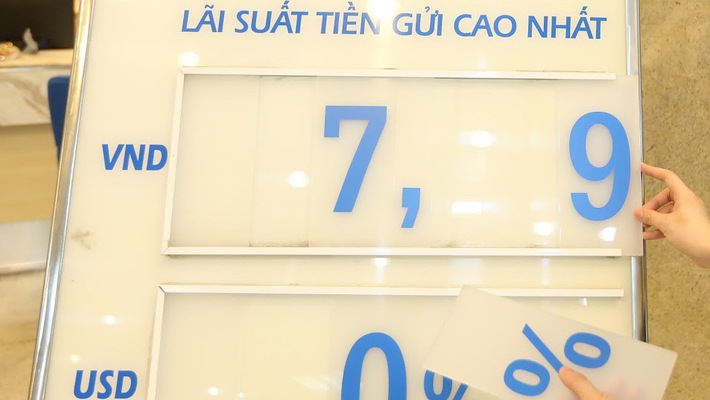Division In Banking Sector Sharpens
Last update 08:00 | 13/03/2018
Division in banking sector sharpens

Some banks have reported increased mobilized capital
The interbank interest rate has dropped again, hovering around 1.8-2.5 percent per annum for short-term lending, showing plentiful capital in the banking system.
However, some banks have still set deposit interest rates at high levels of 7.9-8 percent. In addition, they have run promotion campaigns in which depositors can enjoy additional interest rates of 0.5-0.7 percent per annum.
A large commercial bank pioneered the interest rate cut movement in late 2017. The bank lowered its deposit interest rates after realizing a sharp increase in deposits and low capital use coefficient, which forced it to reconsider capital mobilization costs.
The CEO of the bank, speaking at a meeting with the press, said though the bank’s interest rates were the lowest in the market, deposits had continued to increase.
An analyst said while some banks have abundant capital, others face a shortage because most of the capital is flowing into prestigious banks instead of banks that offer high interest rates.
He said that after the recent scandals with deposits at several banks, people have become more cautious when choosing banks to deposit money. They accept low interest rates and refuse high interest rates offered by banks they believe are ‘less prestigious’.
While some banks have abundant capital, others face a shortage because most of the capital is flowing into prestigious banks instead of banks that offer high interest rates. |
‘Prestigious’ banks include the four state-owned banks and a few joint-stock banks.
“The current situation is different from that of several years ago. The interest rate gap among banks has widened to 2.3-2.5 percent per annum. In the years before, the gap was below 2 percent,” he said.
The deposit interest rates set by joint-stock banks are still on the rise. In 2017, the interest rate of 8 percent per annum was applied by a few banks. More banks have offered a high interest rate to improve their competitiveness.
In its latest report, the National Finance Supervisory Council pointed out that though the Vietnam dong interest rate in the interbank market is low, many banks find it difficult to approach capital sources.
Low interest rates of 1.5-4 percent are not reserved for banks which have difficulties and don’t have collateral. Therefore, banks have to satisfy capital needs by trying to attract more capital from the public.
The State Bank of Vietnam has repeatedly issued bills in an effort to withdraw cash from circulation.
RELATED NEWS
The hallmarks of the banking sector in 2017
State-owned bank also hires foreign CEOs
Nam Mai
vietnam economy, business news, vn news, vietnamnet bridge, english news, Vietnam news, news Vietnam, vietnamnet news, vn news, Vietnam net news, Vietnam latest news, Vietnam breaking news, credit growth rate, BIDV, SBV
Vietjet Launches Four Routes Linking Top Destinations Of Việt Nam And India
Vietjet has officially launched four more services linking top destinations of Việt Nam and India including HCM Ci... Read more
Sacombank To Recruit 300 Staff By July
Sacombank is set to hire 300 employees by the end of July for positions like personal/corporate customer service ass... Read more
"Fly First-Pay Later" By MOVI And Vietjet Wins Technology Award
“Fly first - Pay later” is an 100 per cent online financial product that first appeared on the Vietnamese market... Read more
EXIM Thailand Opens Representative Office In HCM City, Inks Credit Deal With BIDV
The Export-Import Bank of Thailand has agreed to provide the Bank for Investment and Development of Việt Nam with ... Read more
Vietjet Launches Two Routes To India
The two newest routes, which will operate 3 and 4 round-trip flights per week respectively, are expected to continu... Read more
Vietjet Develops E-logistics, Pays 20 Per Cent Stock Dividend
The budget carrier expects to earn more than VNĐ22.3 trillion (US$959 million) in air transport revenue in 2022 Read more

